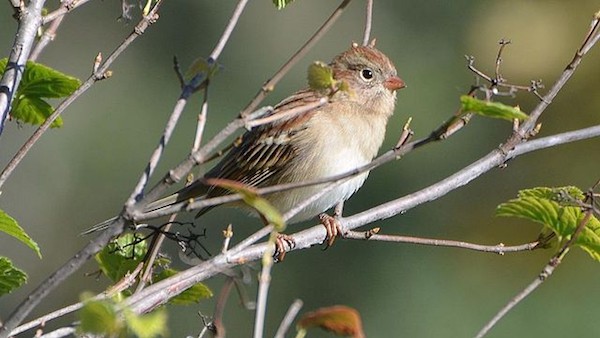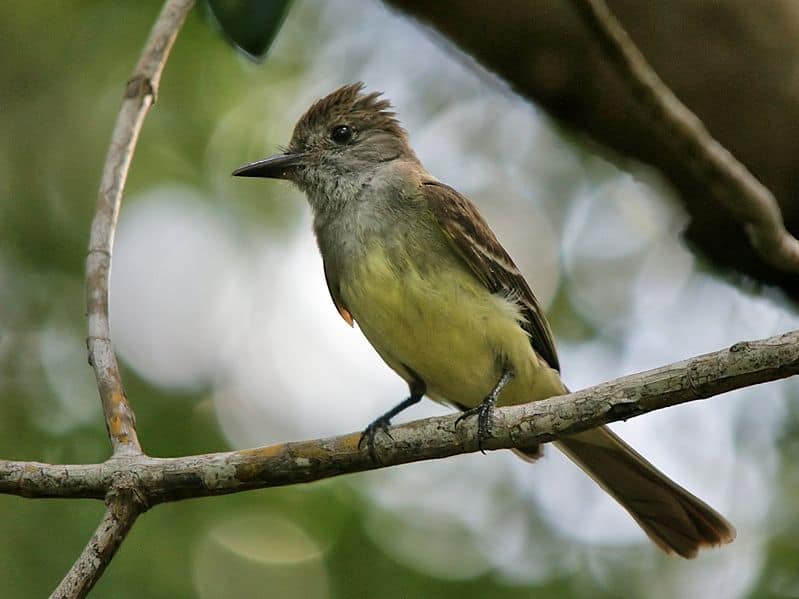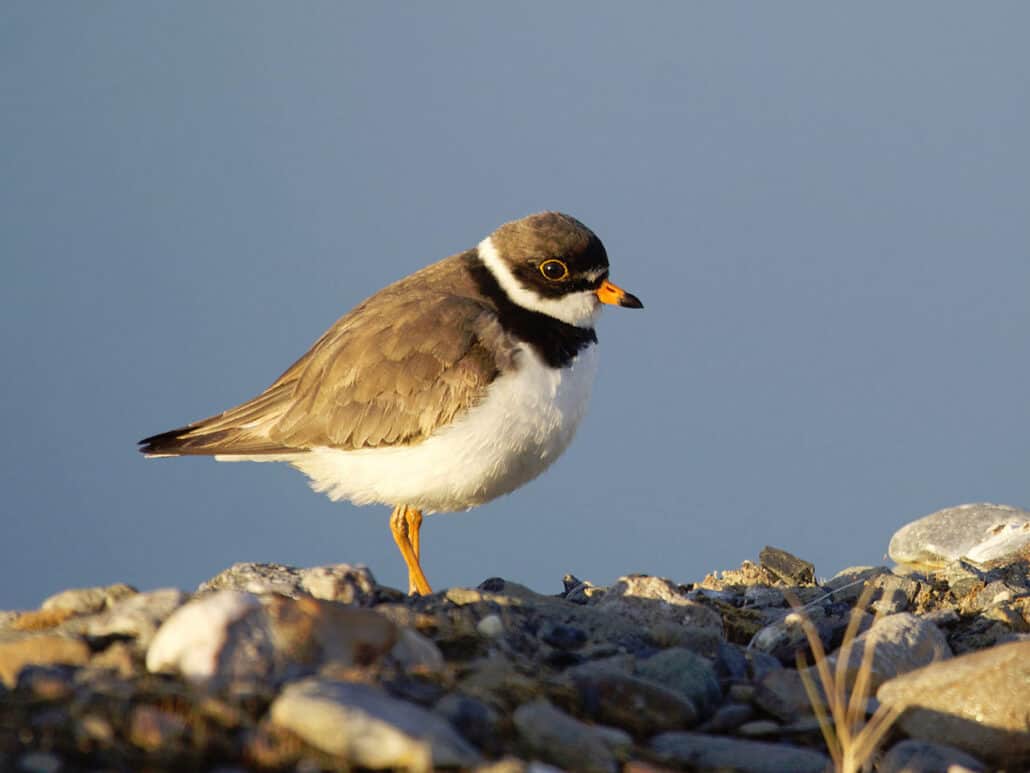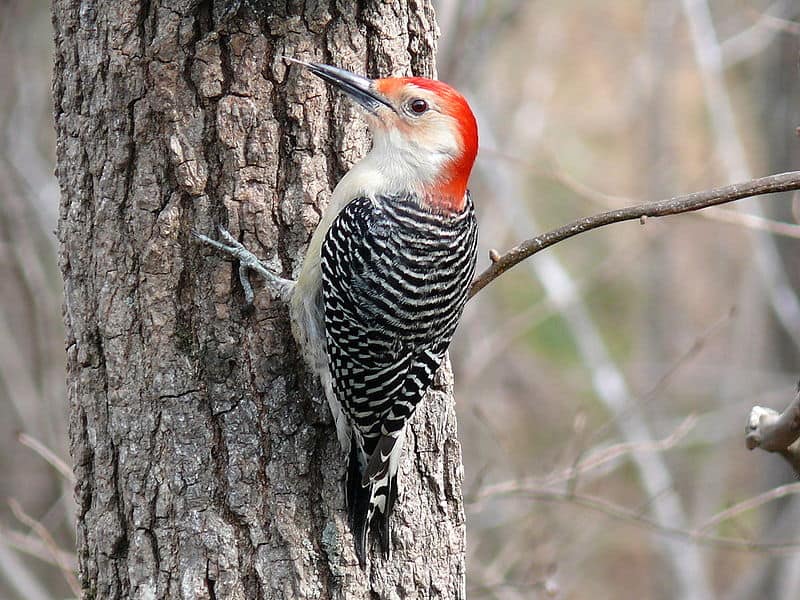Look For
The field sparrow is a small bird (5 ¾ inches long) with a biggish bill and long tail, but the first field marks most bird watchers notice are the pink bill, plain face, and white ring encompassing the dark eye. Telling the field sparrow apart from chipping or tree sparrows is noticing the field’s unmarked buffy-gray breast and head stripes of brown and gray.
Listen For
The field sparrow’s clear, whistled notes of a single tone is an easy bird song to learn and remember. Listen throughout the day, even in summer, for this persistent singer. Its rhythmic pattern sounds like a ping-pong ball is being dropped onto a table—it bounces faster until it stops.
Find It
As its name suggests, the field sparrow is found in fields, but it prefers brushy, older fields that have beginnings of reforestation—saplings, small shrubs, and large thick clumps of grass. Field sparrows are found in rural areas of the eastern two-thirds of the United States, but—unlike many of our migrant songbirds—they may only migrate a few hundred miles to spend the winter.
In the spring and summer, males do their singing from an exposed perch on the top of a sapling or fence post. Today, although field sparrows are still common, they appear to be on the decline, probably because most old, brushy fields are either growing back into forest or are being cleared for agriculture or suburban development.
Feed It
Field sparrows will come to cracked corn, mixed seeds, and eggshell bits scattered on the ground beneath bird feeders. Throughout the year, the field sparrow’s diet is grass seeds and other small plant seeds; in spring and summer their diet shifts to insects.
Moths, grasshoppers, flies, and other grassland insects make up half of their summer diet, with most of the insects being found on or near the ground. In winter, as flocks of field sparrows forage together, a single bird will perch atop a tall grass stem, letting its weight bend the stalk to the ground where the seeds can more easily be eaten.
Nesting
In early spring, their nests are built on the ground, near a grass clump or small shrub. Later nests may be in taller shrubs or vegetation, but the construction is the same—a loosely woven outer cup of grass lined with fine, soft grasses, all built by the female. Three to six eggs are laid and incubated by the female for about 12 days.
Like other ground nesters, young field sparrows develop quickly and may leave the nest within a week. The birds are able to fly after about two weeks, with the parents still tending to their needs. Fledgling field sparrows look quite different from their parents and can be difficult to identify when seen alone. After another two weeks with their parents, the young birds attain full independence.




